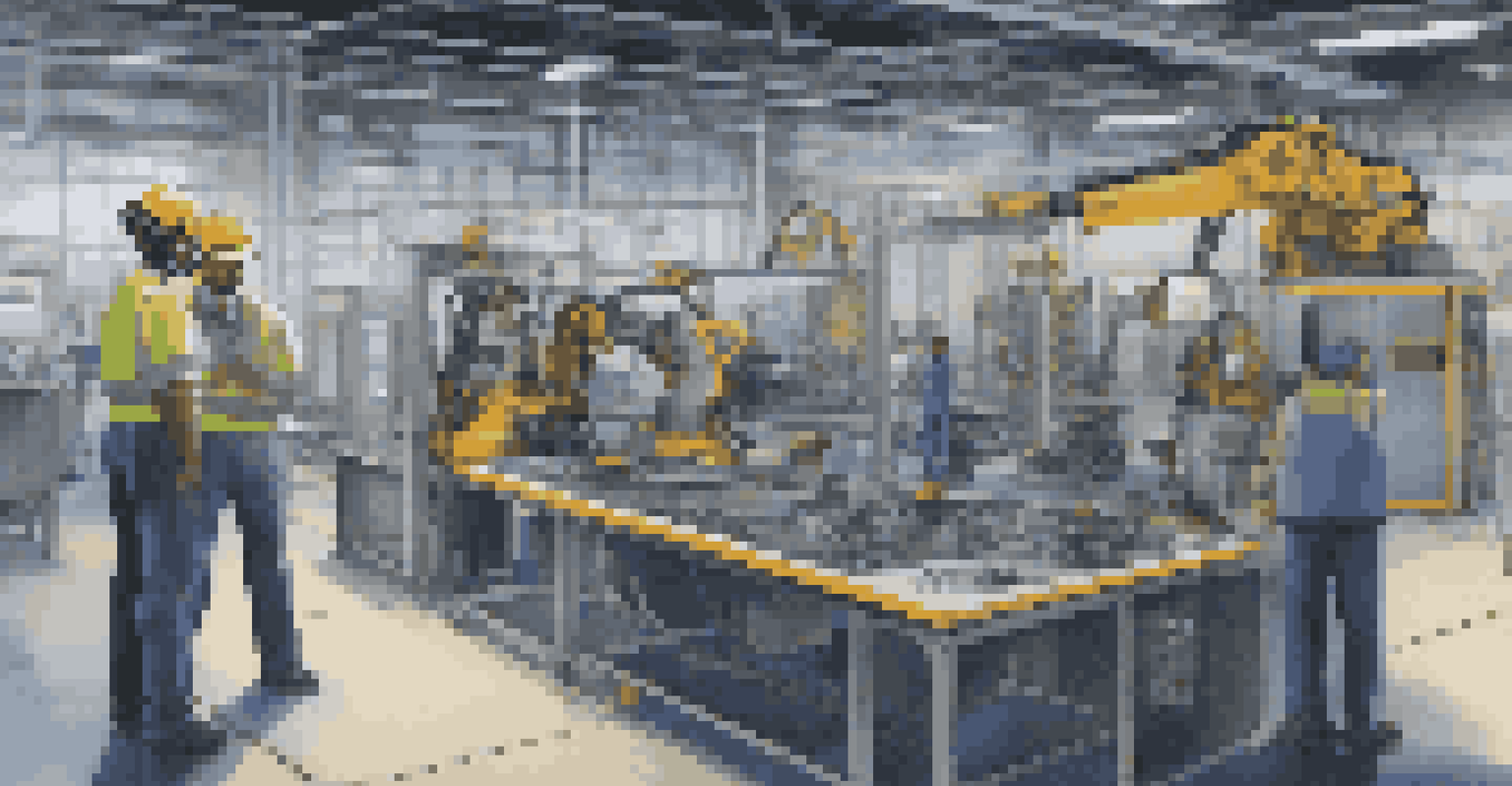Enhancing Technical Training with Virtual Reality Simulations

What is Virtual Reality in Technical Training?
Virtual reality (VR) is an immersive technology that creates simulated environments, allowing learners to engage in interactive experiences. In technical training, VR offers a safe space for individuals to practice skills without real-world consequences. This can be particularly beneficial in high-stakes environments like healthcare or engineering, where mistakes can be costly.
Virtual reality is the most powerful technology we have to be able to connect with each other and understand each other’s perspectives.
Imagine a budding surgeon practicing intricate procedures in a virtual operating room. This not only boosts their confidence but also hones their skills before they ever touch a real patient. With VR, the line between theory and practice blurs, making learning both effective and exciting.
Moreover, VR can cater to various learning styles, offering visual, auditory, and kinesthetic experiences all in one. This adaptability ensures that all trainees can find a method that resonates with them, enhancing overall learning outcomes.
Benefits of VR Simulations in Technical Training
One of the primary benefits of VR simulations is the ability to provide hands-on experience in a controlled environment. Trainees can make mistakes and learn from them without any real-world repercussions. This level of freedom encourages exploration and experimentation, which are essential for mastering technical skills.

Additionally, VR training can be accessed from anywhere, breaking down geographical barriers. Whether in a classroom or at home, learners can dive into their training whenever it suits them. This flexibility is particularly valuable for busy professionals looking to upskill or reskill.
VR Enhances Technical Training
Virtual reality provides immersive, hands-on experiences that allow learners to practice skills safely and effectively.
Furthermore, the engaging nature of VR can lead to higher retention rates. Studies have shown that immersive learning experiences can enhance memory recall, meaning that trainees are more likely to remember what they learned in a virtual setting than through traditional methods.
Real-World Applications of VR in Technical Training
Industries such as aviation, healthcare, and manufacturing have already started leveraging VR for training purposes. For instance, pilots use flight simulators to practice maneuvers and handle emergencies without any risk. These simulations replicate real-life scenarios, allowing trainees to build their skills progressively.
The only way to learn is to live life, and virtual reality is a way to live life without the consequences.
In healthcare, medical students can perform surgeries in a virtual environment, gaining invaluable practice before entering an operating room. This not only prepares them for real-life situations but also reduces anxiety when they encounter their first patients.
Manufacturing firms are also using VR to train employees on complex machinery. Workers can learn to operate equipment virtually, minimizing the risk of accidents and ensuring they are well-prepared for their roles.
Challenges in Implementing VR Training Programs
Despite its many advantages, implementing VR training programs can come with challenges. One significant hurdle is the cost of the technology and the development of high-quality simulations. For some organizations, this initial investment may seem daunting, especially if they have limited budgets.
Additionally, there can be a steep learning curve for both trainers and trainees. Some individuals may feel overwhelmed by the technology or resistant to change from traditional training methods. It’s essential to provide adequate support and resources to ease this transition.
Flexibility and Accessibility
VR training can be accessed from anywhere, making it ideal for busy professionals looking to upskill or reskill.
Moreover, not all training scenarios can be effectively replicated in a virtual environment. While VR excels in certain areas, there are still skills that require hands-on experience with real materials or equipment. Finding the right balance between VR and traditional methods is crucial for optimal training outcomes.
Future Trends in VR for Technical Training
As technology continues to evolve, the future of VR in technical training looks promising. Advancements in hardware and software will lead to even more realistic and immersive training experiences. Imagine a scenario where trainees can interact with virtual objects as if they were real, enhancing their learning experience further.
Another exciting trend is the integration of artificial intelligence (AI) with VR. AI can personalize training experiences, adapting scenarios based on individual learner performance. This tailored approach ensures that each trainee gets the support they need to succeed.
Moreover, the growing accessibility of VR technology means that more organizations can adopt these innovative training methods. With the potential for cost-effective solutions, even smaller companies can enhance their training programs, leveling the playing field across industries.
Measuring the Effectiveness of VR Training
To ensure that VR training programs are effective, it's crucial to establish metrics for success. This can include assessing knowledge retention, skill proficiency, and overall learner satisfaction. By analyzing these metrics, organizations can make informed decisions about the effectiveness of their training approaches.
Feedback from trainees is invaluable in this process. Gathering insights on their experiences can help identify areas for improvement and highlight the strengths of the VR training program. This iterative process allows organizations to refine their training strategies continuously.
Future Trends in VR Training
Advancements in VR technology and AI integration promise more personalized and realistic training experiences.
Furthermore, comparing VR training outcomes with traditional methods can provide a clearer picture of its impact. By conducting thorough evaluations, organizations can justify their investments in VR and demonstrate the benefits to stakeholders.
Conclusion: The Future of Technical Training is VR
In conclusion, enhancing technical training with virtual reality simulations offers immense potential. The immersive nature of VR engages learners in ways that traditional methods simply cannot match. As technology advances and becomes more accessible, we can expect to see a significant shift in how training is delivered across various industries.
By embracing VR, organizations can provide safe, effective, and engaging learning experiences that prepare individuals for real-world challenges. The benefits of hands-on practice in a virtual environment can lead to better-trained professionals and ultimately improve workplace performance.

As we look to the future, it’s clear that VR will play a pivotal role in shaping the landscape of technical training, making it an exciting time for both educators and learners alike.